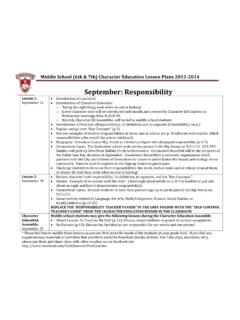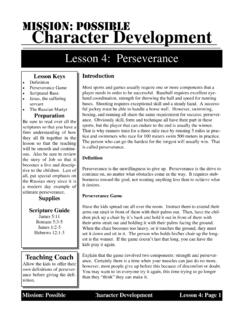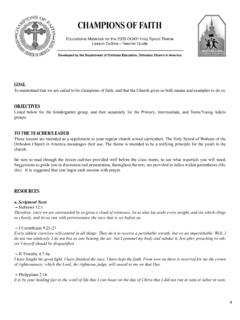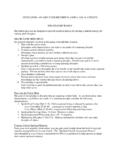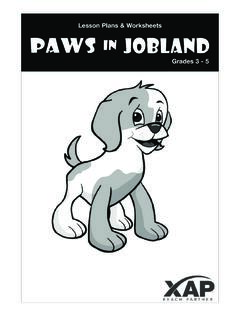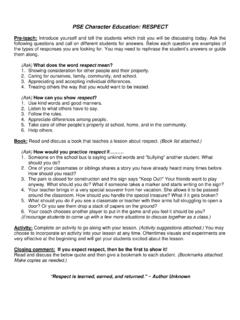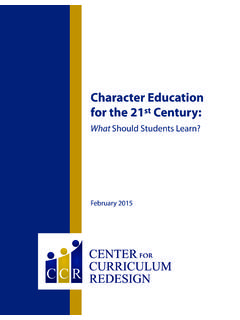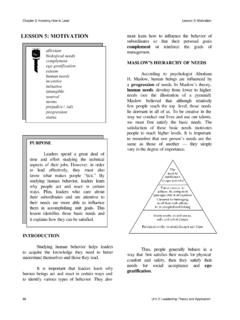Transcription of Lesson: Lord of the Flies - Lessons from Literature
1 From LITERATUREF amily Violence Prevention FundLord of the Flies A novel by William GoldingLessonFamily Violence Prevention from LITERATUREF amily Violence Prevention FundApproximate Time: 3 Weeks (daily 55-minute sessions)OverviewIn the following unit, students will explore the themes of power, control, abuse and respect between the characters in the novel lord of the Flies . The terms power and control refer to how power in an intimate relationship or between peers can be used, either positively or negatively, to control or influence another person. Learning Objectives Identify and describe power and control dynamics between the characters and how their circumstances influence their behavior.
2 Identify and explain the consequences of physical and verbal abuse. Propose ways in which the principles of respectful behavior can help people to have healthier relationships. Create a visual or audio presentation that demonstrates the principles of respectful SequenceOutlined below you ll find the Lessons from Literature recommended instructional sequence for teaching lord of the Flies . This lesson was designed to be taught as-is or integrated into your existing lesson plan for this book. We recommend you tailor this sequence to your own teaching style and your students abilities and interests.
3 Materials lord of the Flies one copy of the novel per student recommended Teacher PreparationPhotocopy Handouts (see page 31) one per studentTerms Power, control, consequences, principles of respectful behavior, equality, exclusion, autonomy (See online section Getting Ready to Teach for term definitions.) lesson : lord of the FliesEnglish Language Standards Reading comprehension/Critical thinking/Analysis Expression (verbal and written) Language/literary techniques, terms Research skills Technology skills Cultural understanding Active (civic) participation Print or download the full NCTE Education Standards Chart at of the Flies 1954 ISBN 0-399-52920-9 Part I: This section kicks off the lesson with an activity to familiarize students with the themes of power, control, abuse and respect.
4 Part II: This section deepens students understanding of power, control, abuse and respect after they ve had the opportunity to explore these themes in Part III: This section has culminating activities and assessment opportunities that you can select from to complete this Literature unit. At this point in the lesson , it is assumed that students have engaged in most or all of the Discussions, along with any other activities you ve taught along the : Designed to be integrated throughout Parts II and III of the lesson , this section offers discussion topics and activities that address themes of power, control, abuse and respect, as students make their way through the reading.
5 These Discussions provide students with multiple opportunities to articulate their ideas, engage in dialogue with their peers, and reflect on how these ideas relate to the text and the real from LITERATUREF amily Violence Prevention Fund1 Game set-up: Have students play the I m Going to a Party and game. Ask for three volunteers to begin; they will be the leaders. All three leaders will be told that to attend the party, classmates must bring an item that has a double consonant in it: eggs, butter, balloons, apples, kittens, etc. Leaders 2 and 3 each have an additional rule which they do NOT share with other leaders.
6 Here are the rules: Leader 1: Accepts all students who offer a correct item (double-consonant word) Leader 2: Accepts only students who offer a correct item and share a common trait, such as eye or hair color, with this leader (leader decides prior to starting the game, but doesn t share with other leaders) Leader 3: Accepts only students who offer a correct item and are sitting in a particular row or area of the classroom (leader decides prior to starting the game, but doesn t share with other leaders)2 Game play: Allow the leaders to run the game. Leaders begin by giving classmates examples of the things they may bring to the party.
7 Leaders should NOT tell their classmates the double-consonant rule; classmates have to figure out the secret/pattern. Classmates begin to offer their items, stating: I m going to a party and bringing _____. Leaders may move students to a different part of the classroom as they become admitted to the party. Allow the game to run until students have divided themselves up into two factions, with some students admitted to the party and others denied even though they offered a double-consonant item. 3 Debrief: Ask students (including the leaders) to think about how it felt to be admitted or excluded from the party.
8 Use the following questions: How did it feel to be in charge? How did it feel to be able to come to the party? How did it feel to be left out of the party? What happened when certain people could or could not get into the party/group? Was leadership challenged? If so, how? What were the results? In this game, who had power and control? In what ways were power and control used? 4 Wrap-up: Remind students that while this was just a game, repeated and intentional exclusion among groups and between individuals happens every day. Explain that using power to exclude another individual or group from attending a party may be hurtful, but the repeated and intentional use of power and control to exclude and isolate can be abuse.
9 Tell the class that they are going to explore ways that power and control are used among groups and individuals in the book, lord of the Homework: Observe the student population in your school and the various groups that exist. Look at characteristics that define and distinguish each group, such as mannerisms or clothing preferences. What do these groups have in common? In what ways do individuals behave differently when in a group versus alone? Does each group have a leader? What distinguishes the leader from other group members? Observation research can be conducted in the school whereby students analyze the behavior of their peers.
10 As an alternative, you can also choose to have students examine behavior they witness on TV, in a movie, or in another form of In-class follow-up: Introduce and distribute the Power and Control Wheel/PCW and Respect Wheel/RW (see pages 32 33) to students and ask them to consider the importance and influence of (see page 23) can begin once students have completed Part I Understanding Power and Control and Their ImpactLesson: lord of the FliesPart from LITERATUREF amily Violence Prevention FundLesson: lord of the FliesPart IIPart IIDeepening Our Understanding of Power and Control through Literature The following mock-trial activity can follow the characterization activity (Discussions, page 24).




